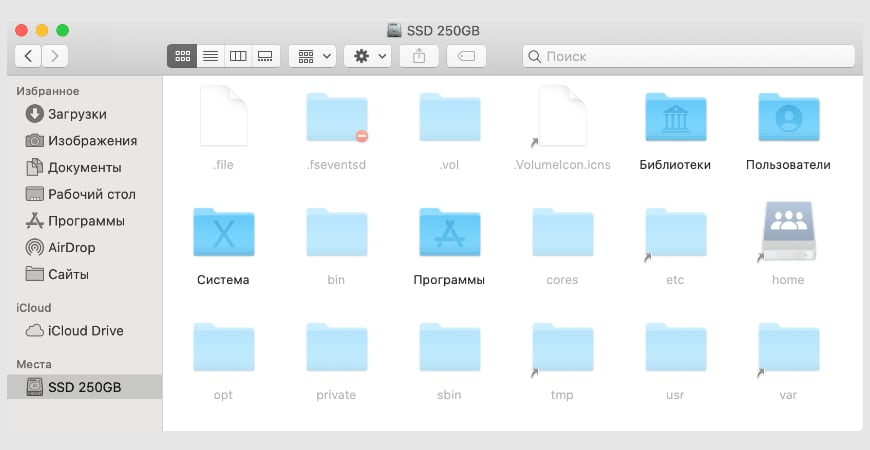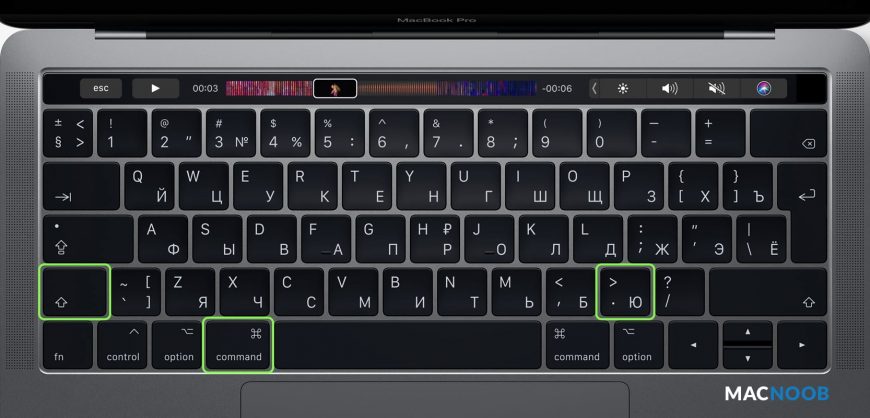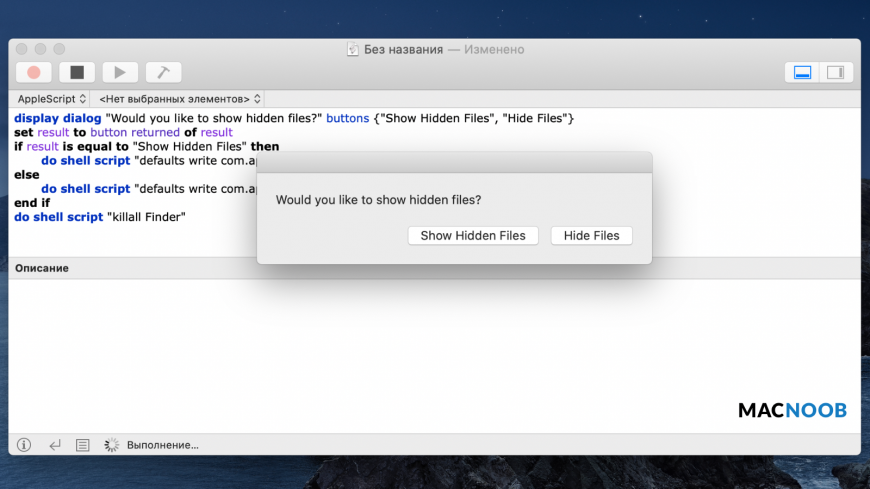5 способов как показать скрытые файлы и папки в macOS
В этой статье опишем 5 простых способов как показать скрытые файлы и папки macOS. Воспользоваться ими может даже пользователь с минимальными навыками работы на Mac.
Как и любая другая операционная система, macOS позволяет скрывать файлы и папки. Но просто зайти в настройки и активировать режим отображения скрытых файлов или папок не получится.
В отличие от проводника Windows, на Mac такого переключателя нет. Но отчаиваться не стоит, вариантов решения несколько.
Горячие клавиши
Использование сочетания клавиш — это самый быстрый способ показать скрытые папки и файлы Mac.
- Откройте Finder.
- Нажмите одновременно три клавиши Ctrl + Shift + .
Это отобразит все скрытые файлы и папки на Mac мгновенно.
Чтобы скрыть их снова нажмите клавиши Ctrl + Shift + . ещё раз.
Приложение Терминал
Стандартное приложение Терминал установлено в macOS по умолчанию. Оно позволяет пользователям изменять настройки операционной системы, передавая ей команды и параметры.
В данном методе мы будем вводить команды UNIX в окне приложения Терминал. Это не сложно, все команды ниже проверены мной лично.
Вы можете получить доступ к терминалу напрямую из поиска Spotlight, через Launchpad в Dock или просто перейдите по пути Finder > Программы > Утилиты . Там увидите приложение.

Чтобы увидеть скрытые файлы в macOS:
- Откройте приложение Терминал.
- Скопируйте и вставьте в него следующую команду:
defaults write com.apple.Finder AppleShowAllFiles 1 && killall Finder
Выглядеть это будет так:
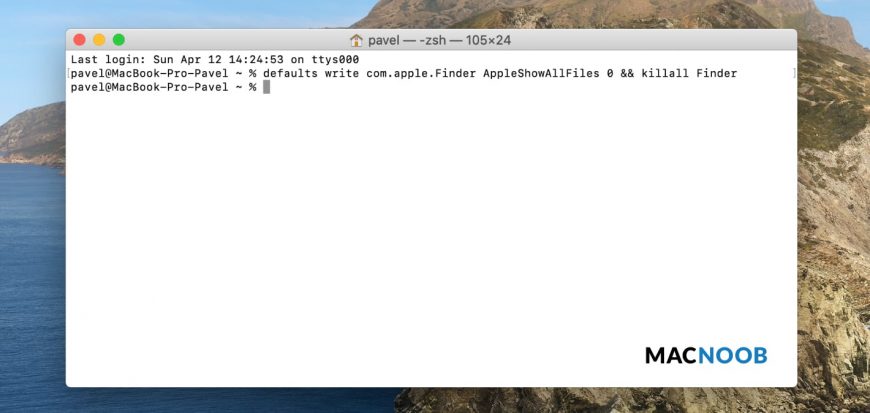
В результате выполнения команды отобразятся все скрытые папки macOS и спрятанные от ваших глаз документы.
Чтобы обратно скрыть скрытые файлы macOS необходимо ввести другую команду:
defaults write com.apple.Finder AppleShowAllFiles 0 && killall Finder
Этот метод не сложный, но подразумевает, что вы держите под рукой (или может помните наизусть) команды UNIX для ввода в Терминал.
Держать под рукой команды может быть неудобно, если отображать/скрывать файлы с папками приходится часто. Для того чтобы упростить этот процесс воспользуйтесь одним из следующих способов.
Программа Funter
Существует несколько приложений, которые функционируют как расширения Finder. Они позволяют делать скрытые файлы и папки видимыми (или невидимыми) в пару кликов, что делает процесс доступа к ним очень простым.
Среди подобных приложений можно выделить бесплатную программу Funter от команды разработчиков Nektony. Она предназначена для отображения скрытых файлов без использования Терминала или запоминания горячих клавиш.
После установки Funter отображает свою иконку в верхней строке меню. Работа со скрытыми файлами сводится к одному клику — включить или выключить их отображение.
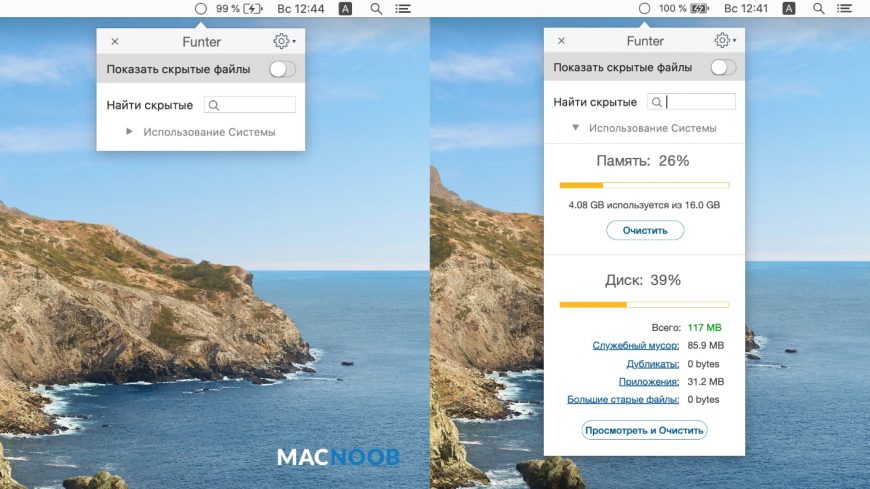
Если нажать на «Использование системы», приложение развернётся и можно увидеть процент использования оперативной памяти и жёсткого диска.
Funter интегрируется в меню macOS (это можно отключить в настройках), что позволяет устанавливать либо снимать атрибут «скрытый» для файлов и папок кликом правой кнопки мыши.
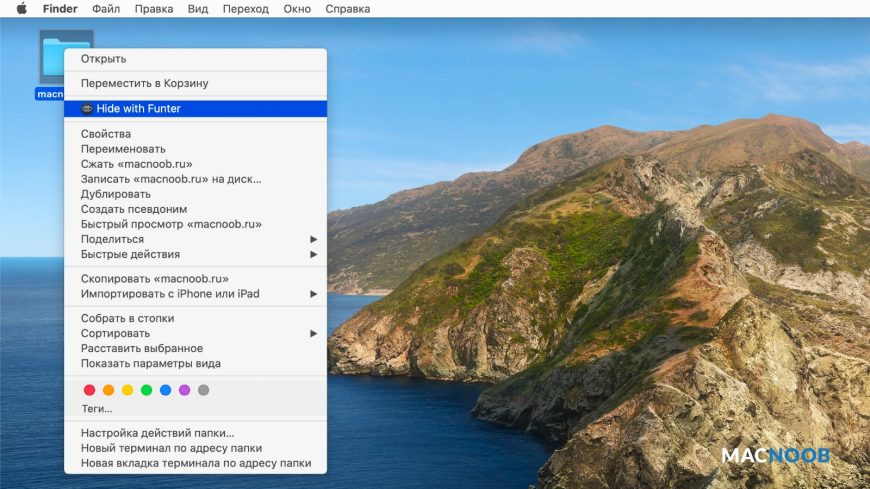
Funter практически не потребляет ресурсы Mac, поддерживает русский язык и позволяет разом решить проблему отображения скрытых файлов на Mac.
AppleScript
В этом способе мы создадим исполняемый файл, при клике по которому будут отображаться скрытые папки и файлы Mac. Запоминать команды с горячими клавишами или ставить сторонние программы не нужно.
AppleScript — это язык, разработанный для того, чтобы помочь автоматизировать повторяющиеся или трудоёмкие действия на macOS. С его помощью можно сделать скрытые файлы видимыми.
Работа с AppleScripts происходит через стандартный инструмент операционной системы «Редактор скриптов». Найдите его через Launchpad и запустите.
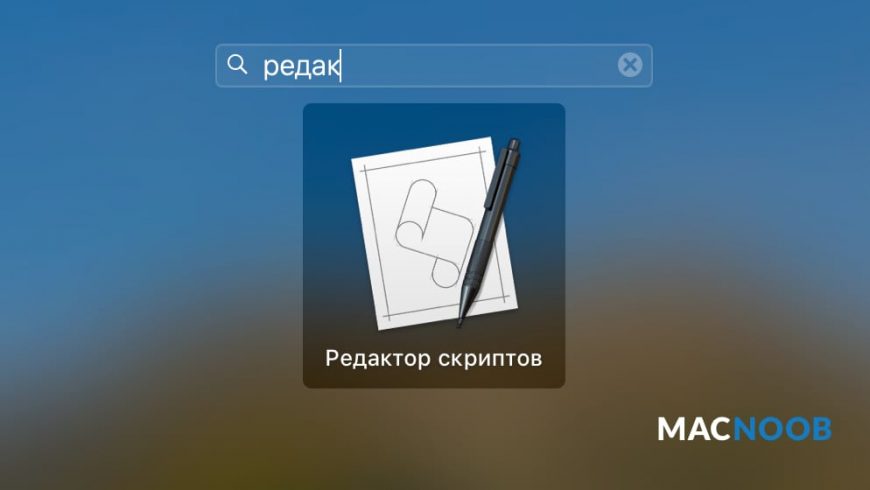
Создайте новый документ, скопируйте и вставьте следующий код в окно редактора:
display dialog «Would you like to show hidden files?» buttons <"Show Hidden Files", "Hide Files">
set result to button returned of result
if result is equal to «Show Hidden Files» then
do shell script «defaults write com.apple.finder AppleShowAllFiles -bool true»
else
do shell script «defaults write com.apple.finder AppleShowAllFiles -bool false»
end if
do shell script «killall Finder»
Должно получиться так:
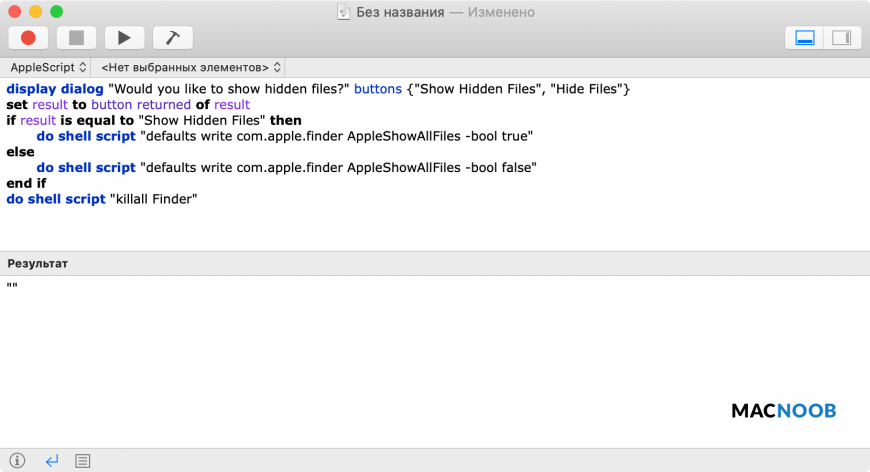
Нажмите кнопку «Запустить скрипт » в окне программы, после чего выберите необходимое действие:
- Show Hidden Files — показать.
- Hide Files — скрыть.
Со храните этот файл, чтобы можно было использовать его позже.
Теперь каждый раз, когда нужно скрыть или посмотреть скрытые файлы или папки, откройте этот файл сценария и нажмите кнопку «Запустить скрипт » .
Папка Library
Библиотечная папка Library на Mac является системной, она скрыта по умолчанию. Можно использовать Терминал, горячие клавиши и другие способы, чтобы попасть в неё. Но есть способ проще.
Для этого нужно предпринять следующие шаги:
- Откройте Finder.
- В верхнем меню выберите пункт «Переход».
- Нажмите клавишу Option (она же Alt), в меню появится раздел «Библиотека».
Кликните по папке, открыв её содержимое. При этом документы на Mac вне папки Library останутся невидимыми.
На этом всё, если остались вопросы — задавайте их в комметнриях ниже. Выбирайте наиболее подходящий вариант и используйте его.
Источник
Question: Q: How do I show hidden files on my mac
How can I show hidden files on my Mac?
iMac, OS X Mavericks (10.9.2)
Posted on Jun 3, 2016 6:12 AM
Helpful answers
NOTE: shift+command+period toggles hidden files in Finder too!! (on macOS Sierra Ver 10.12.4)
No need to open terminal or manually relaunch Finder!
Apr 26, 2017 2:09 PM
Better solution: Use shift+command+period to toggle hidden files in Finder (on macOS Sierra Ver 10.12.4).
This may also work in prompts to open or save documents (see below post from VikingOSX Nov 7, 2016 5:16 AM )
Apr 26, 2017 2:23 PM
There’s more to the conversation
Loading page content
Page content loaded
Jun 3, 2016 6:15 AM
- Hi. You can try these steps:
- 1. Open Terminal found in Finder, go to Applications, choose Utilities
- 2. In Terminal, paste the following:
- 3. Press return after that.
- 4. Hold the ‘Option/alt’ key, then right click on the Finder icon in the dock and click Relaunch.
Jun 3, 2016 6:18 AM
If you want to hide or show hidden files on Mac, follow this guide. All you need to do is to perform a few simple commands via Terminal.
If you can’t remember those commands for the next time. Don’t worry, there were solutions to help you create aliases for those long commands. In the next time, you only need to enter the short ones.
Nov 7, 2016 1:26 AM
Applications that use the Cocoa (AppKit) NSOpenPanel and NSSavePanel classes that prompt to open or save documents — also permit the use of shift+command+period keyboard shortcut that toggles hidden files on and off in that panel.
Try it with TextEdit, Preview, etc.
Nov 7, 2016 5:16 AM
Applications that use the Cocoa (AppKit) NSOpenPanel and NSSavePanel classes that prompt to open or save documents — also permit the use of shift+command+period keyboard shortcut that toggles hidden files on and off in that panel.
Cool shortcut — I never knew this was possible.
Nov 7, 2016 7:15 AM
NOTE: shift+command+period toggles hidden files in Finder too!! (on macOS Sierra Ver 10.12.4)
No need to open terminal or manually relaunch Finder!
Apr 26, 2017 2:09 PM
Better solution: Use shift+command+period to toggle hidden files in Finder (on macOS Sierra Ver 10.12.4).
This may also work in prompts to open or save documents (see below post from VikingOSX Nov 7, 2016 5:16 AM )
Apr 26, 2017 2:23 PM
Question: Q: How do I show hidden files on my mac More Less
Источник
Question: Q: How to find hidden folders using Finder
Really frustrated! I want Finder to show hidden files and folders. I’ve tried everything I could find in this forum and others to do so. This is what I have tried (repeatedly):
Finder>Go hold the option key
If you need to show it permanently
Open your Finder>Go> Home folder then command J to see view options
Then, relaunch Finder
Show Hidden Files Mac OS X El Capitan:
- Click “Finder” icon on your Mac dock.
- Open Terminal. Terminal is a utility that provides access to the OS X El Capitan operating system. It can be opened in one of two following ways:
- Select “Applications” on the left side, then on “Utilities“, and double-click on “Terminal“
- Open the OS X El Capitan Launchpad. Click the “Utilities” folder. Then, double click on “Terminal.”
- Enter the following text into the Terminal window, then press “Enter“: “defaults write com.apple.Finder AppleShowAllFiles YES”
- Exit the Terminal program. This can be done by selecting “Quit Terminal” from the Terminal menu.
- Restart Finder. Your new setting will take effect after you relaunch finder. To do so, hold down the “Alt” key and right-click or two-fingered click on the Finder icon. Select “Relaunch.”
Neither of these work for me. 🙁 Am using Macbook Air and El Capitan Version 10.11.4
MacBook Air, OS X El Capitan (10.11)
Posted on Jun 5, 2016 4:48 AM
Actually you post the screenshot the same way you posted the first screenshot. You don’t need the advanced editor. But, you found the folder you wanted. As far as why the Finder doesn’t, it doesn’t look in Hidden Folders. If you want to find everything on your Mac, I would recommend installing EasyFind from the App Store. It can locate any type of file/folder.
Posted on Jun 9, 2016 3:23 AM
Helpful answers
Spotlight (and thus Finder) will not search system folders by default and your user Library falls into that category. You can make it search system folders if you need to.
As already mentioned, if you know the path, just use Go to Folder.
In this case use this as the path
/ is an alias to your home folder.
Aalso note that the Profiles filed is likely not hidden, only the user Library folder is hidden.
You can acces the Library directly in Finder by holding down the Option key and selecting Library from the Go menu.
You can show the Library always by typing p,
cmd-h, cmd-j in the Finder, then check the box to show the Library folder.
You seem to know about both, so where does each of those options fail?
I Don’t use Thunderbird, so it may be that they hid their sub folders which would double down on Apple’s stupidity in hiding the Library folder.
Jun 9, 2016 3:15 AM
There’s more to the conversation
Loading page content
Page content loaded
Do not include the quotes.
defaults write com.apple.finder AppleShowAllFiles YES
Jun 5, 2016 5:05 AM
Which «hidden» folders are you trying to show?
The «Show Library Folder» option in View Options merely shows the user Library. It doesn’t show all hidden items in the file system.
If trying to show the user Library, what part doesn’t work?
Can you find the setting?
Can you check it?
There is no need to relaunch the Finder.
Jun 5, 2016 5:06 AM
You could make an AppleScript application that you place in your Dock, or even the Finder toolbar, and each time that you click it, hidden files/folders appear or disappear. If you decide to remove from the Finder window toolbar, then press the command key and click/drag the icon off. The following was tested on OS X 10.11.5.
Launch your Script Editor (Launchpad : Other : Script Editor). Copy and paste the following (see below) AppleScript into the Script Editor. Click the compile button (hammer icon). Now run it (black triangle button) with an open Finder window on your home directory. You want to save the content twice:
- Save the source code that you have just pasted as Text
- File Format: Text (this adds an applescript extension to your filename
- Save in Documents or your location choice for safe keeping.
- No check boxes selected
- Save as an Application (option + File menu : Save As…)
- File Format: Application
- Location: /Applications
Drag and drop from Applications to your Dock, or to the Finder window toolbar (short filename e.g. Nohide)
- Checkbox: Hide Extension
- Quit Script Editor
AppleScript:
— Attribution to, and submitted by Baltwo on Apple Support Community
try
do shell script «defaults read com.apple.finder AppleShowAllFiles»
on error
do shell script «defaults write com.apple.finder AppleShowAllFiles False»
end try
if ( do shell script «defaults read com.apple.finder AppleShowAllFiles») is equal to «False» then
do shell script «defaults write com.apple.finder AppleShowAllFiles True»
else
do shell script «defaults write com.apple.finder AppleShowAllFiles False»
end if
do shell script «killall Finder»
Источник
